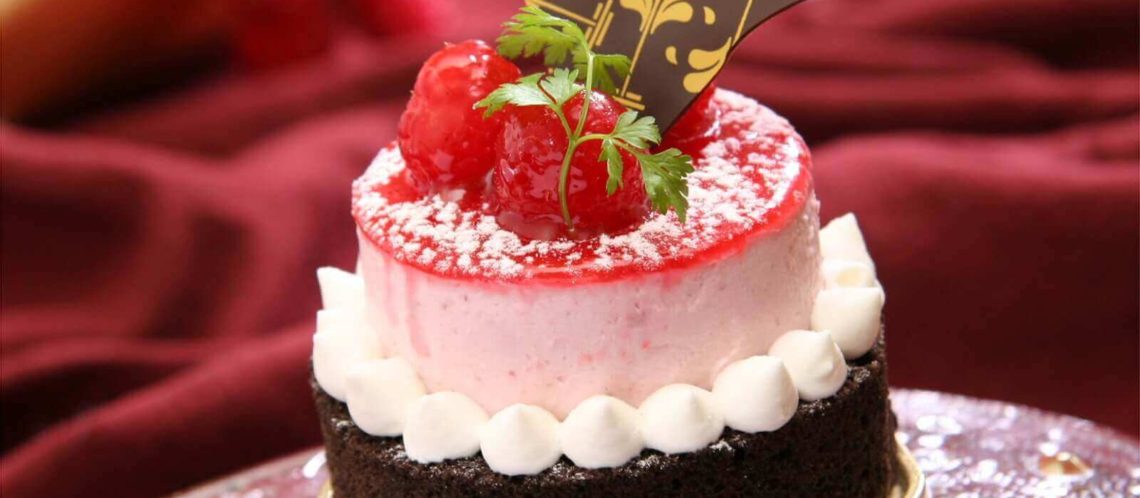Typical cake ingredients are flour, sugar, eggs, butter or oil, a liquid, and leavening agents, such as baking soda or baking powder. Common additional ingredients and flavourings include dried, candied, or fresh fruit, nuts, cocoa, and extracts such as vanilla, with numerous substitutions for the primary ingredients. Cakes can also be filled with fruit preserves or dessert sauces (like pastry cream), iced with buttercream or other icings, and decorated with marzipan, piped borders, or candied fruit.
Cake is a form of sweet dessert that is typically baked. In its oldest forms, cakes were modifications of breads, but cakes now cover a wide range of preparations that can be simple or elaborate, and that share features with other desserts such as pastries, meringues, custards, and pies.
Cake is often served as a celebratory dish on ceremonial occasions, such as weddings, anniversaries, and birthdays. There are countless cake recipes; some are bread-like, some are rich and elaborate, and many are centuries old. Cake making is no longer a complicated procedure; while at one time considerable labor went into cake making (particularly the whisking of egg foams), baking equipment and directions have been simplified so that even the most amateur cook may bake a cake.
The term “cake” has a long history. The word itself is of Viking origin, from the Old Norse word “kaka”.
The ancient Greeks called cake which was derived from the word for “flat”, πλακόεις (plakoeis). It was baked using flour mixed with eggs, milk, nuts and honey. They also had a cake called “satura”, which was a flat heavy cake. During the Roman period, the name for cake became “placenta” which was derived from the Greek term. Placenta were baked on a pastry base or inside a pastry case
The Greeks invented beer as a leavener, frying fritters in olive oil, and cheesecakes using goat’s milk.In ancient Rome, basic bread dough was sometimes enriched with butter, eggs, and honey, which produced a sweet and cake-like baked good. Latin poet Ovid refers his and his brother’s birthday party and cake in his first book of exile, Tristia.
Early cakes in England were also essentially bread: the most obvious differences between a “cake” and “bread” were the round, flat shape of the cakes, and the cooking method, which turned cakes over once while cooking, while bread was left upright throughout the baking process.
Sponge cakes, leavened with beaten eggs, originated during the Renaissance, possibly in Spain.
During the Great Depression, there was a surplus of molasses and the need to provide easily made food to millions of economically depressed people in the United States. One company patented a cake-bread mix in order to deal with this economic situation, and thereby established the first line of cake in a box. In so doing, cake as it is known today became a mass-produced good rather than a home- or bakery-made specialty.
Later, during the post-war boom, other American companies (notably General Mills) developed this idea further, marketing cake mix on the principle of convenience, especially to housewives. When sales dropped heavily in the 1950s, marketers discovered that the cake in a box rendered the cake-making function of housewives relatively dispiriting. This was a time when women, retired from the war-time labor force, and in a critical ideological period in American history, were confined to the domestic sphere and oriented towards the freshly blossoming consumerism in the US.
In order to compensate for this situation, the marketing psychologist Ernest Dichter ushered in the solution to the cake mix problem: frosting. Since making the cake was so simple, housewives and other in-home cake makers could expend their creative energy on cake decorating inspired by, among other things, photographs in magazines of elaborately decorated cakes.
